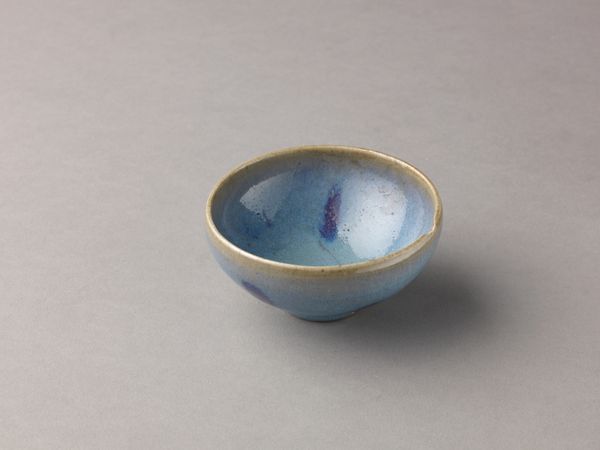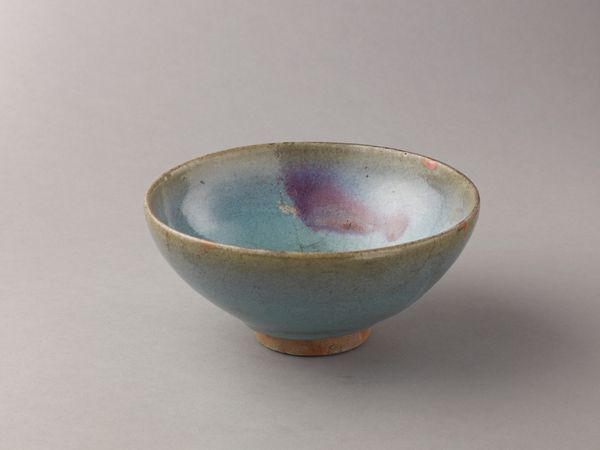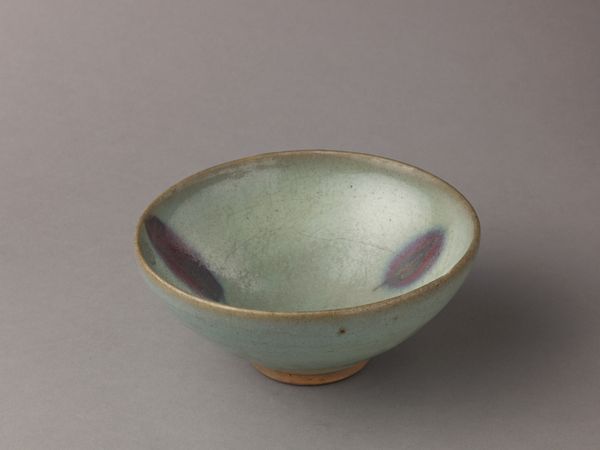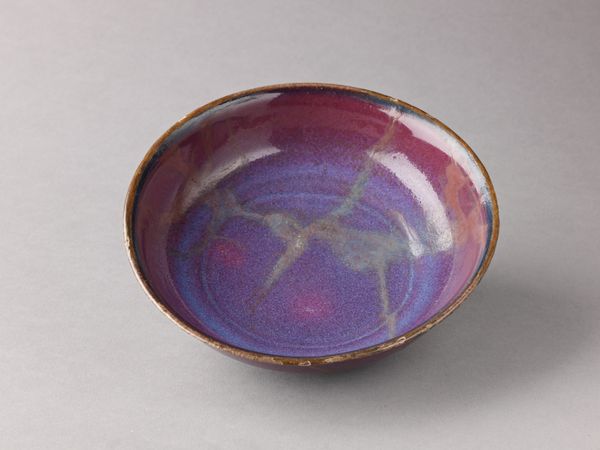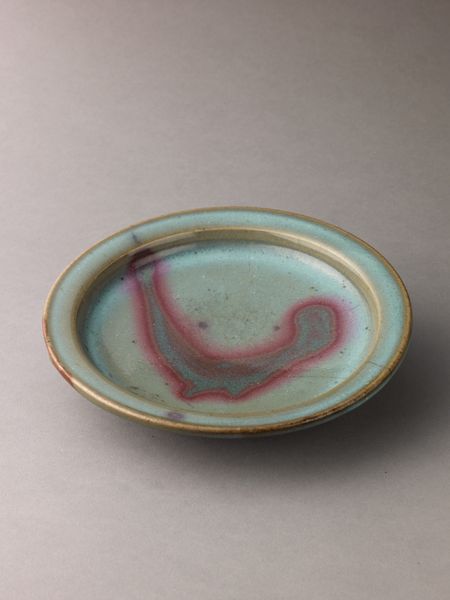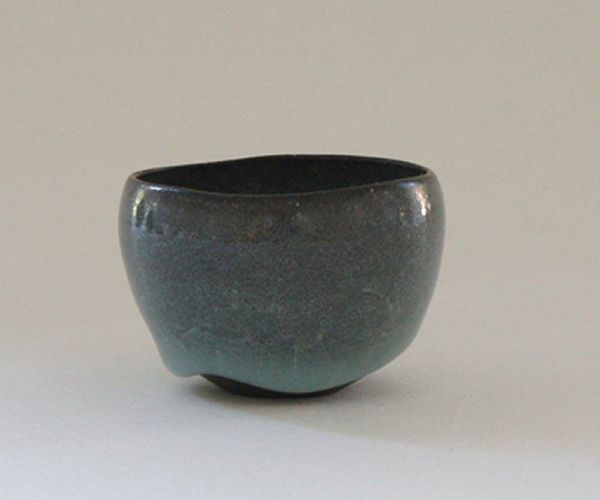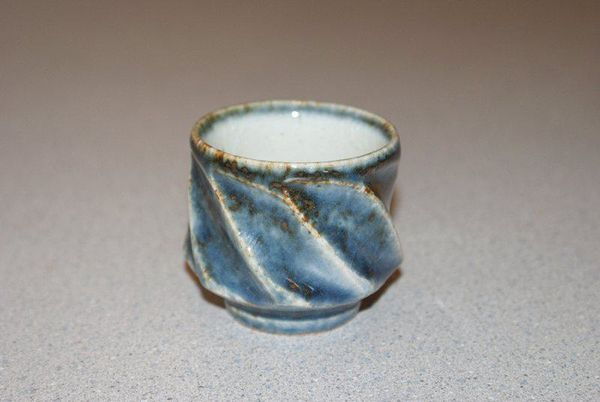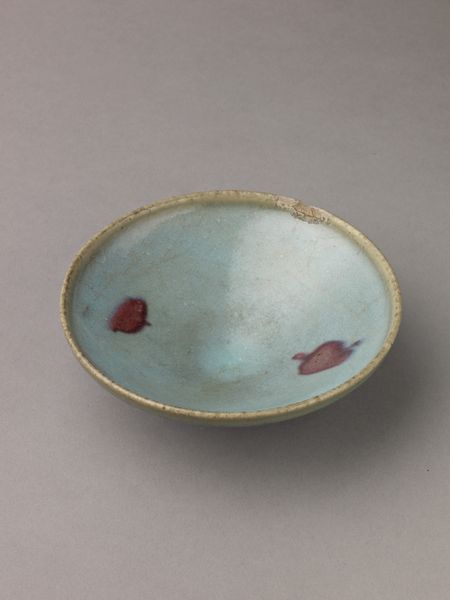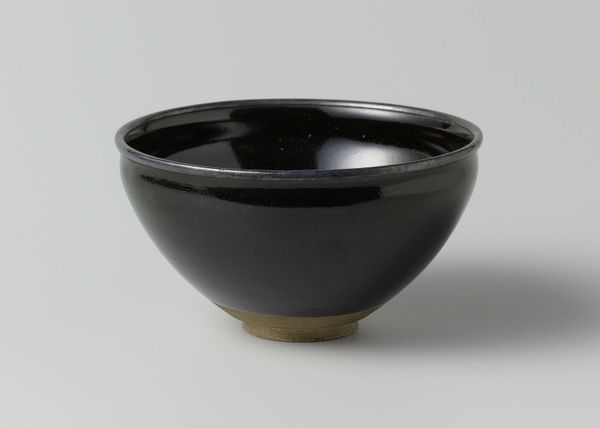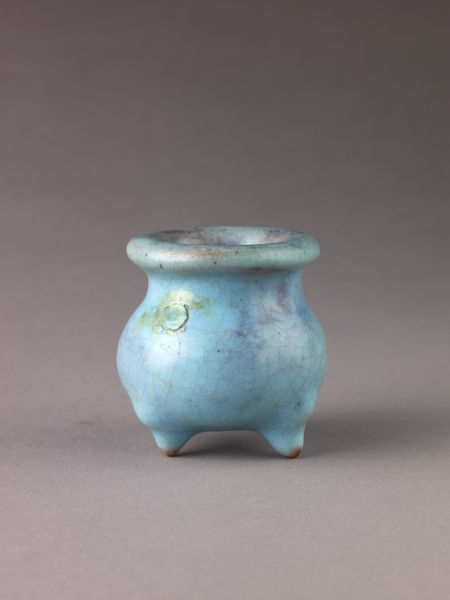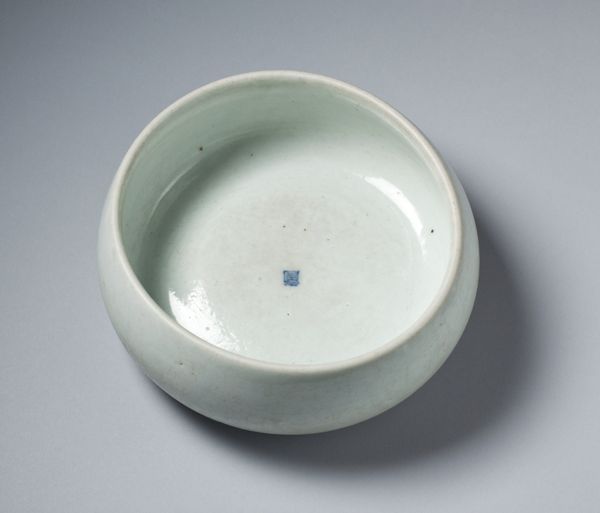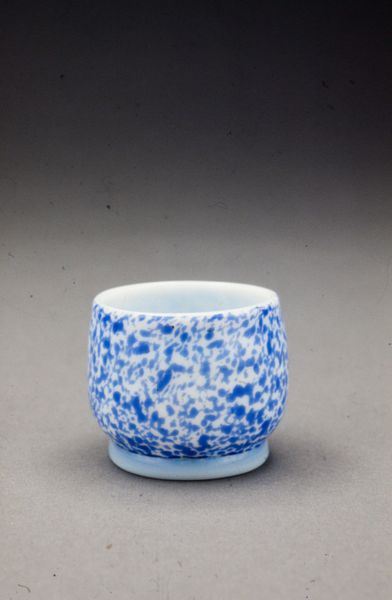
ceramic, earthenware
#
asian-art
#
ceramic
#
earthenware
#
ceramic
Dimensions: Diameter: 3 3/8 in. (8.5cm.)
Copyright: Public Domain
Editor: This is a Small bowl, a Jun ware made between 1200 and 1400. It's a ceramic earthenware piece, currently held at the Metropolitan Museum of Art. It's the glaze that really catches my eye, this dreamy blend of blues and purples… What do you make of it? Curator: Indeed, the chromatic interplay is quite striking. Note the distribution of color—the gradient from a saturated interior to a more subdued exterior. How do you interpret that transition? Editor: Maybe it's about containment, holding something precious within? The deep colours almost seem to vibrate. Curator: An astute observation. The vessel itself is simple, yet consider the surface—the thick, lustrous glaze, almost obscuring the earthenware beneath. What effect does this layering produce? Editor: It almost hides the materiality of the bowl itself, which is interesting, as you’d expect it to celebrate the physical form. Is the surface treatment perhaps suggesting a departure from function? Curator: Precisely. While utilitarian in form, the emphasis on surface and glaze elevates it beyond mere function. There is a clear visual language—a structural dichotomy—between form and surface. What might this tension suggest to you about its purpose? Editor: Perhaps its aesthetic value outweighs its practical purpose. It encourages us to think of this not just as a bowl, but as an artwork in its own right. Thank you, I see so many subtle nuances I missed before! Curator: You're most welcome. Remember, every form holds visual information, it is only the trained eye that can translate the true essence of beauty.
Comments
No comments
Be the first to comment and join the conversation on the ultimate creative platform.
